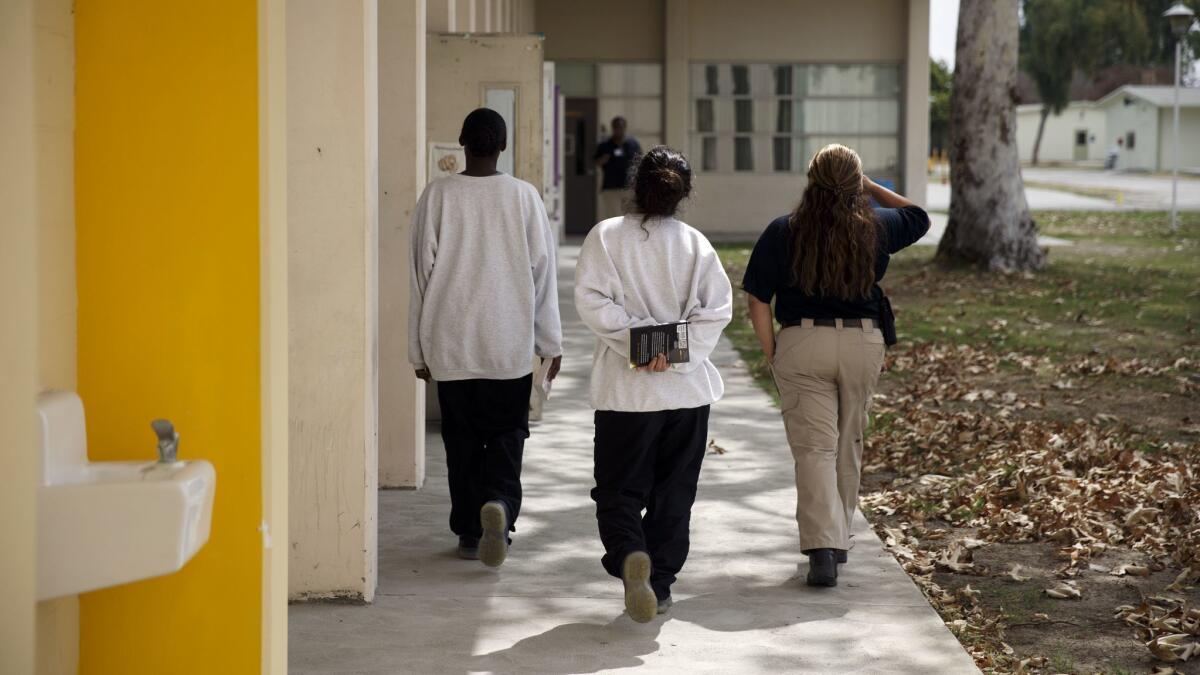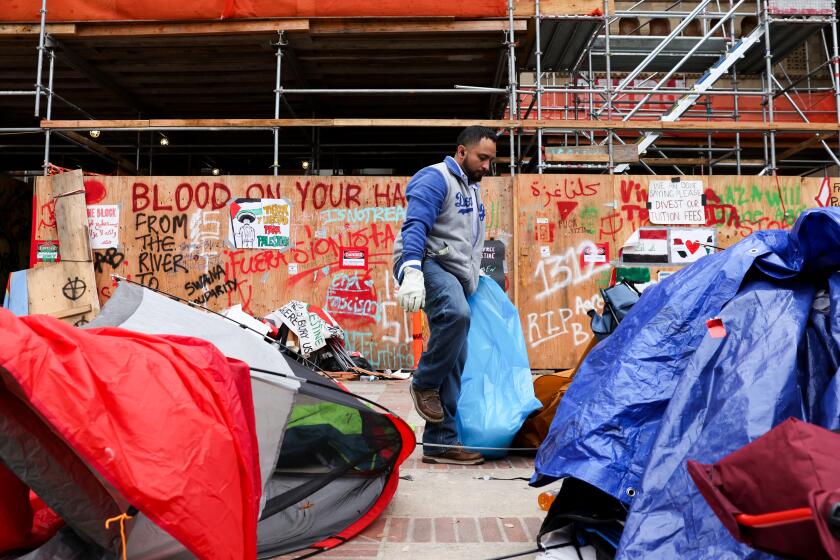Pepper spray is used too frequently on L.A. juvenile detainees, report says

Officers engaged in inappropriate and avoidable uses of pepper spray to subdue detainees in Los Angeles County juvenile detention facilities in recent years, sometimes violating their own rules mandating its use as a last resort, according to a report issued Monday.
The review by the Los Angeles County Office of Inspector General found that the Probation Department has inadequate training, supervision and accountability systems that contribute to an over-reliance on the spray, which is designed to cause severe irritation in the eyes and skin to control unruly subjects.
The report doesn’t reveal many new details about specific cases or data from 2018.
It does recommend 18 changes to the department’s policies related to its officers’ reliance on pepper spray, in addition to raising the question of whether its use should be discontinued, as some juvenile justice reform advocates have argued.
Supervisor Mark Ridley-Thomas sought the review in December amid reports that the use of the spray had tripled in recent years.
The report is expected to be discussed Tuesday by the supervisors. It comes amid an ongoing discussion about reforming the nation’s largest juvenile probation operation, which includes more than 7,700 youths under community supervision and about 900 on average detained in halls or camps.
While praising the cooperation of probation staff during the review, the report raised concerns about a punitive culture inside detention facilities in which youths were regularly subjected to oleoresin capsicum spray, as it is formally known. The department allows it as a “last resort” to control violent youths.
The review shows that pepper spray use across all department facilities increased from 294 incidents in 2015 to 747 in 2017 — a jump of 154%. About 400 incidents were reported through July 2018, suggesting they were on pace to match 2017, according to the data.
More recent data weren’t included in the report, and the department hasn’t released such information in response to inquiries by The Times and other media organizations.
The report shows an even more dramatic increase in the number of incidents at juvenile halls, where offenders go before their cases are adjudicated, as opposed to juvenile camps, which serve as longer-term rehabilitation facilities.
The questions over spray use mark the latest flare-up over the agency’s ability to manage its population of juvenile offenders. The U.S. Justice Department has previously required county officials to implement reforms to improve conditions and to prevent the abuse of young offenders.
The department and its employees have noted a variety of reasons for the increase, saying staffing challenges have led detention officers to resort to spray more quickly than their training would suggest.
They have also said officers worried about discipline for engaging in physical acts to subdue youths in violent or dangerous situations have chosen to rely on the spray as a safe alternative.
The report had been anticipated for weeks by advocacy groups.
In a letter sent Friday, the L.A. Youth Uprising Coalition, which includes the ACLU of Southern California, the Children’s Defense Fund of California and others, urged a ban on the use of chemical spray in the county.
The group cited the limited use of sprays in juvenile facilities by other states — and raised concerns about its traumatizing effects on young people and their relationships with facility staff.
It also questioned why the use of the spray had increased even as the department’s juvenile hall population had decreased over the years.
The average population in juvenile halls decreased by about 5% from 2015 to 2017, according to data obtained by The Times under the California Public Records Act. Instances of pepper spray use, meanwhile, increased much more dramatically during that time, according to other departmental records reviewed by The Times.
Such advocates say the use of the spray harms youths both physically and psychologically. They also say it is counterproductive in an environment aimed at rehabilitation of young offenders that depends on good relationships among detainees and staff to function.
“The use of force involving chemical agents is a practice that is far out of step with good practices or the rules in the vast majority of the U.S. juvenile justice system,” said Ian Kysel, a staff attorney at the ACLU Foundation of Southern California.
Monday’s report acknowledged the potential harm in using pepper spray, but also suggested that any discussion of eliminating or restricting it be accompanied by consideration of institutional safety.
“Department personnel and leadership express an awareness of OC spray’s physical and emotional harm to youth and of its negative implications for staff-youth relationships and larger department culture,” the report said. “Most also express, however, a firm belief that absent adequate alternatives, the use of OC spray is necessary to safeguard their personal safety.”
More to Read
Start your day right
Sign up for Essential California for news, features and recommendations from the L.A. Times and beyond in your inbox six days a week.
You may occasionally receive promotional content from the Los Angeles Times.







